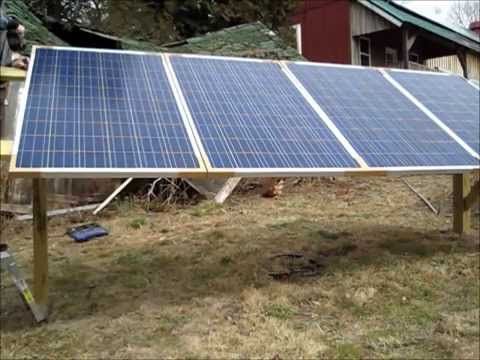Let s estimate you get about five hours per day to generate that 30 kwh you use.
How much sun would my solar panels get.
Considering 6 peak sun hours per day and 300 watt panels you need 16 to produce 700 kwh each month.
If you have limited roof space the best recommendation is installing the most efficient solar panelsavailable.
The us ranges from about 4 hours 6 hours of sunlight per day on average see the below map.
Axis trackers generate more electricity by using about the same amount of space as fixed systems.
Solar panel efficiency typically ranges from 15 to 20 percent but high end solar panels like sunpower can offer efficiency levels as high as almost 23 percent and above.
Solar radiation peaks at solar noon when the sun reaches the highest point in the sky.
Most solar panels range in efficiency from 16 20 so 22 would be exceptional.
We used the 16 18 and 22 for low medium and high efficiency solar panels.
If a solar panel has 20 percent efficiency that means it s capable of converting 20 percent of the sunshine hitting it into electricity.
For the sake of example if you are getting 5 hours of direct sunlight per day in a sunny state like california you can calculate your solar panel output this way.
Or 30 kwh 5 hours of sun 6 kw of ac output needed to cover 100 of your energy usage.
5 hours x 290 watts an example wattage of a premium solar panel 1 450 watts hours or roughly 1 5 kilowatt hours kwh.
The average efficiency of solar panels falls between the 17 to 19 percent efficiency range.
Utilizing solar panel trackers to maximize your solar system s performance.
Although your panels may get an average of 7 hours of daylight a day the average peak sun hours are generally around 4 or 5.
The highest efficiency solar panels on the market today can reach almost 23 percent efficiency.
Of course one of the really important factors that will affect the power output of your solar panel is how much sun it manages to get on a daily basis.
Solar panel efficiency essentially means that your solar panel is either okay good or great at absorbing sunlight for energy production.
Google s project sunroof gives building by building details and now has data for parts of all 50.
You need a sunny roof to benefit from solar panels but yours may be sunnier than you think.
After all solar panels use sunlight to produce energy so the amount of sunlight will directly affect the final power output.
Solar panel tracking systems can improve a system s output by ensuring constant direct exposure to the sun both during the day and across seasons.
So the kwh divided by the hours of sun equals the kw needed.

